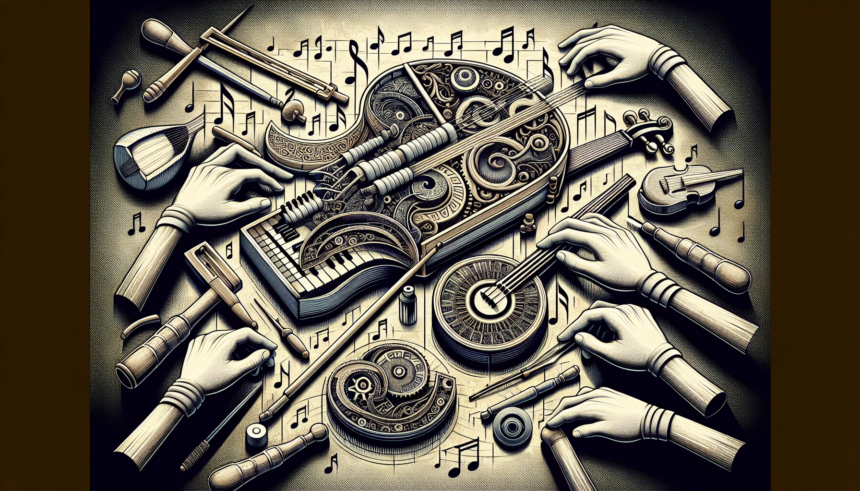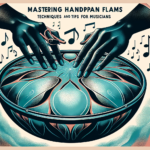<!DOCTYPE html>
<html lang="en">
<head>
<meta charset="UTF-8">
<meta name="viewport" content="width=device-width, initial-scale=1.0">
<title>The Art and Craft of PANArt: Revolutionizing Musical Instruments</title>
</head>
<body>
<article>
<p>In the realm of musical instrument craftsmanship, PANArt stands as an emblem of innovation, artistry, and tradition. This company has etched its name in the annals of musical history by creating instruments that blend unparalleled craftsmanship with acoustic excellence. From the creation of groundbreaking instruments like the Hang to their meticulous approach to material science, PANArt’s journey is one marked by relentless passion and dedication.</p>
<h2>The Origins of PANArt</h2>
<p>Founded in 1993 by Felix Rohner and Sabina Schärer in Bern, Switzerland, PANArt originally began their venture into the world of steel drum fabrication. Inspired by the steel pans of Trinidad and Tobago, PANArt sought to refine and elevate the traditional instrument using innovative procedures and high-quality materials.</p>
<p>The founders’ deep-rooted fascination with the sound potentials of steel curated their journey towards the discovery of Pang, a unique material they developed for their instruments. This marked the beginning of PANArt’s legacy in pioneering new forms of musical expression.</p>
<h2>The Birth of the Hang</h2>
<p>The most notable contribution of PANArt to the world of music is undoubtedly the Hang. Launched in the year 2000, the Hang is a musical instrument that resembles a UFO or a flying saucer, captivating both enthusiasts and professionals with its melodic, resonant sound.</p>
<p>The development of the Hang was a result of intense research and experimentation. Felix Rohner and Sabina Schärer drew inspiration from the traditional steel pans, the Indian ghatam, and the Indonesian gamelan, blending these influences into a unique instrument. The Hang consists of two metal hemispheres welded together. The upper side (Ding) features a central note surrounded by a circle of seven to eight tone fields, while the bottom side (Gu) has a tuned hole that produces a deep resonance when struck or manipulated.</p>
<p>The innovative design of the Hang allows for a wide array of sounds, from rich bass tones to bright, shimmering highs. The instrument can be played with bare hands, offering a tactile and intimate connection between the player and the sound. This intuitive playability and the extraordinary sound quality have made the Hang a cherished instrument in the global music community.</p>
<h2>Material Science and Craftsmanship</h2>
<p>PANArt’s commitment to innovation extends beyond mere design. The creation of their unique material, Pang, exemplifies their dedication to pushing the boundaries of what’s possible in musical instrument craftsmanship. Pang is a type of nitrided steel that has been meticulously engineered to produce superior acoustic properties. The metallurgical process involves hardening the surface of the steel, which enhances its resonance and durability.</p>
<p>This focus on material science demonstrates PANArt’s holistic approach to instrument making. They don’t only think about the design and playability but also the very materials that constitute the instrument. This attention to detail ensures that every Hang and other instruments from PANArt have a distinctive voice, one that resonates with clarity, warmth, and depth.</p>
<p>Craftsmanship at PANArt is a harmonious blend of traditional techniques and modern technology. Each instrument is handcrafted with painstaking precision. The shape, the tuning, and the final finishing touches are all performed with an artisan’s touch, ensuring that every piece meets the highest standards of quality and performance.</p>
<h2>The Evolution to the Gubal and Beyond</h2>
<p>Following the success of the Hang, PANArt continued to explore new horizons in musical instrument design. This led to the creation of the Gubal, an advancement that carried forward the principles of the Hang with added innovations. The Gubal features a central dome and additional resonating elements that offer an even richer tapestry of sound.</p>
<p>The Gubal’s design facilitates a deeper bass resonance, enhancing the musical possibilities for performers. It combines the percussive elements of the Hang with an extended range of tones, making it a versatile instrument suitable for various musical styles and settings.</p>
<p>PANArt’s spirit of innovation didn’t stop with the Gubal. The company has continued to explore new instruments like the Hang Bal and Hang Gudu, each offering unique soundscapes and expanding the musical horizons of their community. These instruments reflect PANArt’s ongoing commitment to creativity, exploration, and the refinement of sound.</p>
<h2>PANArt’s Impact on the Global Musical Landscape</h2>
<p>PANArt's contributions have ripple effects that extend far beyond its native Switzerland. The creation of the Hang and subsequent instruments have inspired a global community of musicians, composers, and instrument makers. The unique sound and playability of these instruments have led to their integration into various musical genres, from classical and jazz to world music and experimental compositions.</p>
<p>The Hang, in particular, has become a cultural icon, appearing in numerous recordings, live performances, and even soundtracks for films and television. Its entrancing sound has captivated audiences worldwide, leading to a growing demand and a flourishing community of Hang enthusiasts and players.</p>
<p>PANArt has also set a precedent for innovation in the field of musical instrument creation. Their approach to material science, coupled with their emphasis on craftsmanship, serves as an inspiration for other instrument makers. By pushing the boundaries and exploring new possibilities, PANArt has redefined what is achievable in the realm of acoustic instruments.</p>
<h2>The Future of PANArt</h2>
<p>Looking ahead, PANArt shows no signs of slowing down. The company's dedication to research and innovation ensures that they will continue to unveil new instruments, each with its own distinct voice and character. There’s a sense of anticipation in the global music community for what PANArt will introduce next.</p>
<p>Felix Rohner and Sabina Schärer, alongside their team, are steadfast in their pursuit of excellence. Their journey from crafting steel pans to revolutionizing musical expression with the Hang illustrates a path paved with passion, ingenuity, and an unwavering commitment to artistic integrity.</p>
<h2>Conclusion</h2>
<p>PANArt’s legacy is one of innovation, artistry, and dedication to the quest for perfect sound. From the creation of the Hang to the continuous exploration of new musical landscapes with instruments like the Gubal, PANArt has demonstrated an exemplary commitment to the craft of instrument making. Their journey is a testament to what can be achieved when tradition meets innovation, offering the world a new avenue of musical expression.</p>
<h2>FAQs</h2>
<h3>1. What inspired the creation of the Hang?</h3>
<p>The Hang was inspired by a combination of traditional steel pans from Trinidad and Tobago, the Indian ghatam, and Indonesian gamelan. Felix Rohner and Sabina Schärer aimed to create a new instrument that combined these various musical traditions into a single, cohesive form.</p>
<h3>2. What makes the material Pang unique?</h3>
<p>Pang is a type of nitrided steel developed by PANArt. It is engineered to enhance acoustic properties, providing superior resonance and durability. The metallurgical process hardens the steel’s surface, making it an ideal material for high-quality musical instruments.</p>
<h3>3. How is the Hang different from the Gubal?</h3>
<p>While both instruments share a similar resonance and playability, the Gubal features additional resonating elements and a central dome that offers deeper bass tones and an extended range of sound. This makes the Gubal more versatile for diverse musical styles.</p>
<h3>4. Is it difficult to learn to play the Hang?</h3>
<p>The Hang is designed to be intuitive and can be played with bare hands, making it accessible for beginners. Its tactile playability allows even those with little musical experience to produce beautiful sounds, although mastery does require practice and skill.</p>
<h3>5. Can I buy PANArt instruments directly?</h3>
<p>PANArt's instruments are handcrafted and often have a waiting list due to high demand. They can be purchased directly through PANArt or authorized dealers. It's recommended to check PANArt's official website for the most accurate and updated information.</p>
</article>
</body>
</html>The Art and Craft of PANArt: Revolutionizing Musical Instruments

Leave a comment




